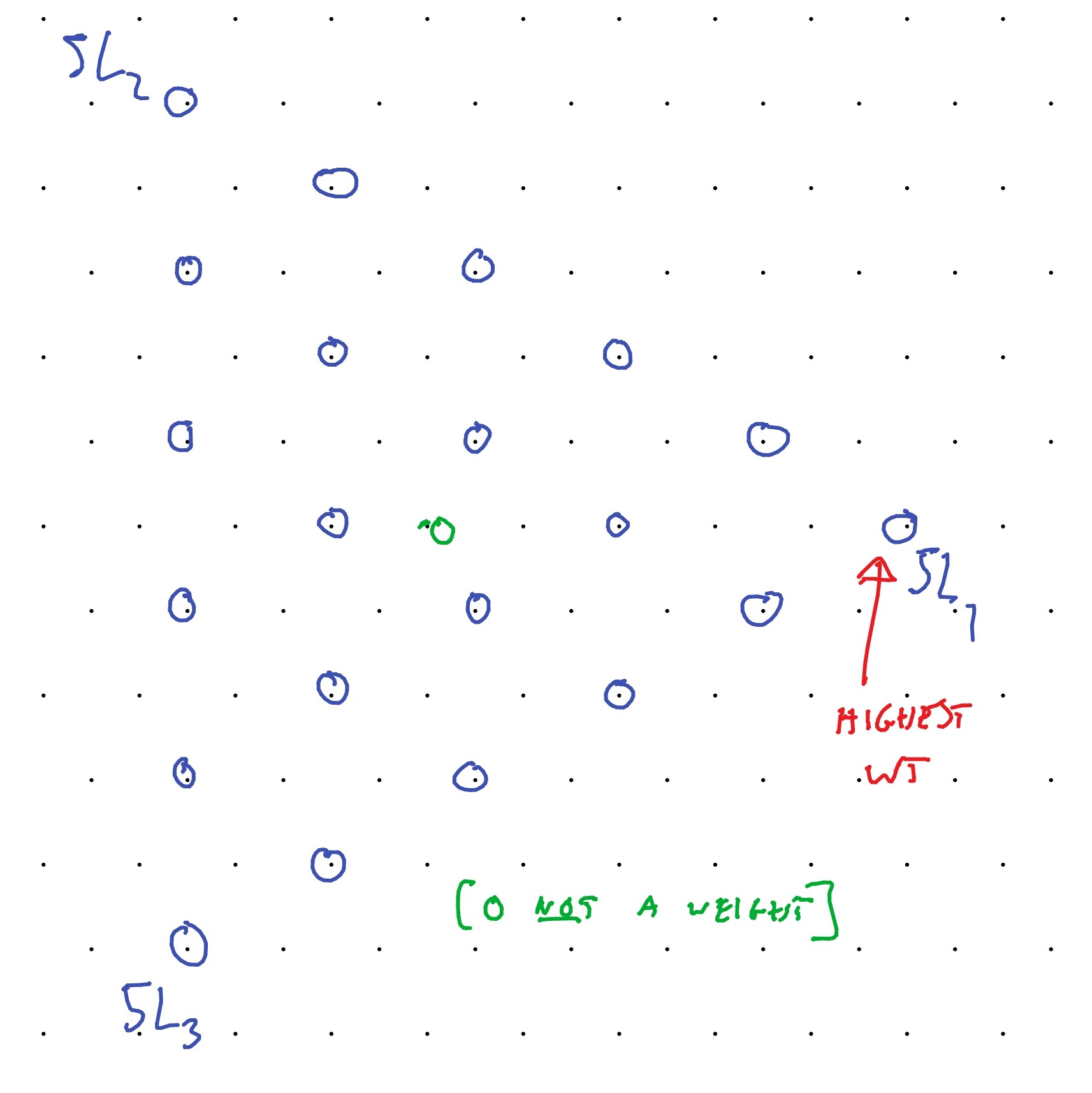7.8 Irreducible representations of sl3,C.
We are now in a position to state the main theorem of -theory.
Theorem 7.28.
For every pair of nonnegative integers, there is a unique (up to isomorphism) irreducible finite-dimensional representation of with a highest weight vector of weight .
Note that the highest weights occuring in the theorem are exactly the dominant elements of the weight lattice.
Since every irreducible finite-dimensional representation does have a highest weight, necessarily dominant, every irreducible representation is isomorphic to for some integers .
Example 7.29.
We have already seen some examples:
-
1.
The standard representation is irreducible with highest weight , therefore
-
2.
The dual to the standard representation is irreducible with highest weight , and so
-
3.
The adjoint representation is irreducible with highest weight , and so
-
4.
The symmetric square has highest weight with highest weight vector .
Exercise 7.30.
(Problem 94). Show that, if is a finite-dimensional representation of with a unique highest weight vector (up to scalar), then is necessarily irreducible.
Deduce that the three representations listed above are indeed irreducible.
For a more general example, we have:
Exercise 7.31.
(Problem 96; non-examinable). Show that the representation has a unique highest weight vector with weight . Deduce that
Convince yourself that the weights in this case are as shown in Figure 13 (which illustrates the case ).
